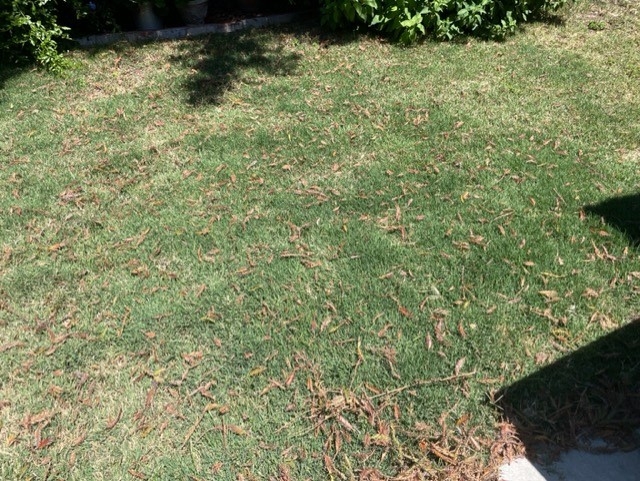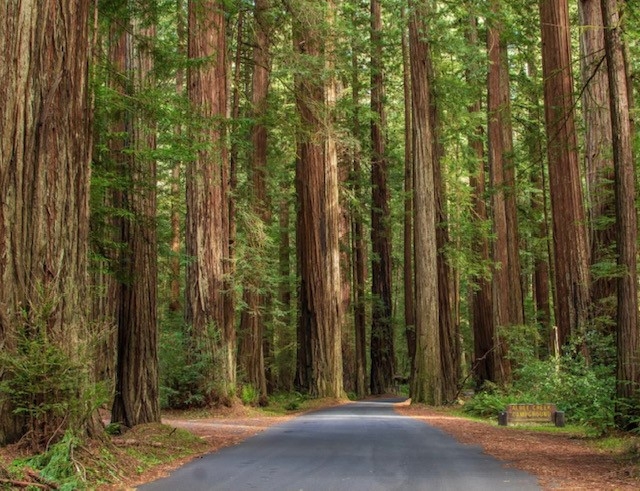After residing amidst the awe-inspiring Coastal Redwood trees (Sequoia sempervirens) for a remarkable 3½ years, I recently returned to the valley. To my surprise, I discovered a significant presence of redwoods in my neighborhood, with my backyard neighbor boasting three of these magnificent trees lining the back fence. The trees were planted in late 1980 and the largest tree is more than 150 feet tall. I've noticed that these trees appear to be under stress, and their presence has become somewhat of a nuisance.

Coastal redwood trees (Sequoia sempervirens) are among the most iconic and majestic tree species on the planet. Native to the Pacific coast of the United States, these towering giants can reach astonishing heights of up to 379 feet and live for over a thousand years. Their remarkable size and age have captured the imagination of nature enthusiasts, scientists, and artists alike. However, the cultural requirements of these impressive trees are quite specific and understanding them is essential for successful growth and conservation efforts. One crucial aspect is avoiding planting them in hot valleys.
The coastal redwood stands as a testament to nature's grandeur and resilience. These towering giants, often referred to as "nature's skyscrapers," dominate the coastal landscapes of Northern California and Oregon. While their imposing height and majestic beauty capture the imagination, the coastal redwood's shallow root system is an equally fascinating and important aspect of their biology. However, this very characteristic that aids their survival in their natural environment can also be a source of concern when it comes to potential damage.
Coastal redwoods are often admired and desired in urban and suburban environments for their aesthetic appeal and the sense of tranquility they bring. However, when planted in urban settings, the shallow root system can create challenges. As these trees grow and their root systems extend laterally, they can come into conflict with sidewalks, roads, and buildings. The pressure exerted by the expanding roots can lead to infrastructure damage, including cracked sidewalks, disrupted pavements, and compromised foundations.
Mature redwood trees with extensive root systems can also disrupt underground utilities like water and sewer lines. As the roots expand, they can infiltrate and clog pipes, causing costly maintenance issues. Consequently, while redwoods can provide beauty and shade to urban areas, careful consideration of their placement is essential to avoid potential damage.
In this article, we delve into the cultural requirements of coastal redwood trees and explore why they are ill-suited for our hot valley environments.
Moisture and Fog: A Vital Combination: Coastal redwoods thrive in a unique climate, characterized by a mixture of cool, moist air and frequent fog. This maritime influence plays a significant role in the tree's growth and survival. Redwoods draw much of their water directly from the atmosphere through a process known as foliar uptake. Their leaves capture moisture from the surrounding air, enabling the trees to supplement their water needs during periods of low rainfall. The fog, which often blankets the coastal areas where redwoods are found, provides a consistent source of moisture, especially during the dry summer months. Without saying, this is missing in our valley.
Temperature Moderation: One of the primary reasons coastal redwoods avoid hot valleys is their sensitivity to temperature extremes. These trees have evolved to thrive in the mild, temperate climates of the coast. Hot valleys, on the other hand, are known for their high temperatures, which can be detrimental to redwood health. Redwoods are not adapted to withstand extreme heat, and prolonged exposure to hot conditions can lead to stress, reduced growth, and even mortality. The coastal environment's moderating effect on temperature, thanks to the adjacent ocean, helps redwoods maintain optimal growth conditions.
Soil Characteristics: Coastal redwoods also have specific soil requirements. They prefer deep, well-draining soils that retain moisture without becoming waterlogged. The roots of these trees are relatively shallow but extensive, spreading out in a wide network to capture water and nutrients. In hot valleys, the soils are often much drier and have less water-holding capacity, making it challenging for redwoods to access the necessary resources for healthy growth.
The Adaptation of a Shallow Root System: One of the most remarkable features of coastal redwoods is their shallow root system. While conventional wisdom might suggest that tall trees require deep roots for stability, redwoods have evolved a different strategy to thrive in their specific habitat. These trees grow in regions characterized by heavy rainfall and fog, which provide ample moisture to the forest floor. As a result, coastal redwoods have adapted by developing shallow, widespread root systems that extend laterally rather than vertically.
The root system of a redwood tree typically spans a wide area, often two to four times the height of the tree. The roots can extend up to 100 feet horizontally but only reach a depth of about 6 to 12 feet. This shallow root system allows redwoods to access moisture from the upper layers of soil, capturing water from rain, fog, and condensation that accumulates on their leaves.
Erosion and Soil Stability: While the shallow root system of coastal redwoods is a marvel of adaptation, it also has the potential to cause issues, particularly in human-impacted environments. One of the main concerns is related to soil stability and erosion. The extensive but shallow root system does not provide the same level of anchoring as deeper-rooted trees. This can lead to soil erosion, especially in areas where the soil has been disturbed by construction, urban development, or other human activities.
In conclusion, the coastal redwood's shallow root system is a testament to nature's ingenuity, enabling these giants to thrive in their unique environments. While this adaptation allows them to access moisture and nutrients efficiently, it also presents challenges, particularly in human-altered landscapes. Soil instability, erosion, and infrastructure damage are potential issues that need to be addressed through careful planning, responsible urban development, and thoughtful conservation efforts. By understanding and respecting the intricacies of the coastal redwood's root system, we can continue to appreciate the beauty of these awe-inspiring trees while minimizing their potential for causing unintended damage coastal redwoods are a testament to the intricate relationship between a species and its environment.
Their specific cultural requirements, including the need for moisture, fog, moderate temperatures, and appropriate soil conditions, have shaped their evolution and survival strategies. While they possess certain adaptations, planting them in hot valleys would be a disservice to their unique characteristics and could lead to diminished growth and health. As stewards of our natural world, it's our responsibility to understand and respect these requirements to ensure the continued thriving of coastal redwoods for generations to come.

